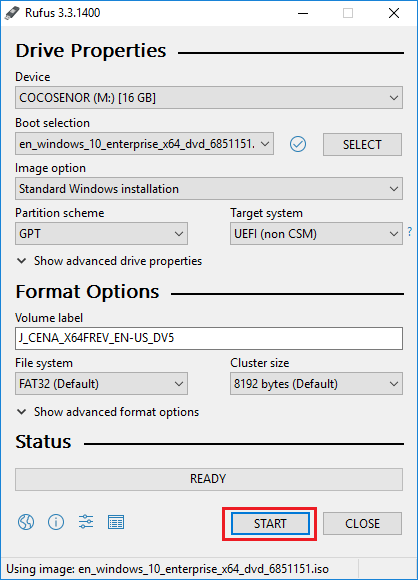


The software is portable, thus, it doesn’t require installation and all its settings will be saved to the program’s directory.ĭownload the ISO file of UFS Explorer Backup and Emergency Recovery CDto any functioning Windows-based computer. Rufus is a free open-source utility for Microsoft Windows that allows creating a bootable USB drive from an ISO file. Specialized software that will mount the ISO file to this digital medium (Rufus and UltraISO were picked out in this instruction as examples, but you may use any other application of your choice or even the standard means of the operating system) Ī secondary computer that will host the whole mounting process.Ĭreating a bootable USB stick (live USB) using Rufus Creating a bootable DVD (live DVD) in WindowsĬreating a bootable storage medium with an ISO image involves the use of the following elements:Īn ISO file with a live OS (in our case – UFS Explorer Backup and Emergency Recovery CD) Īn external storage device large enough to hold the ISO file – a USB drive is a preferred option, yet, a rewritable DVD can also be utilized.Creating a bootable USB stick (live USB) using UltraISO.Creating a bootable USB stick (live USB) using Rufus.This solution makes it possible to handle almost any data loss issue without starting the host OS.

This article offers some guidance on how you can use third-party software to create a bootable storage medium with UFS Explorer Backup and Emergency Recovery CD – a comprehensive data recovery package which includes the Ubuntu Linux distribution with a set of preinstalled UFS Explorer and Recovery Explorer software tools. The environment itself is represented by an ISO file that is mounted to a USB flash drive, a portable hard disk drive connected via USB, or less commonly – burnt to a blank CD or DVD. Such a device contains an OS installation which is ready to run directly from an external storage device instead of the computer’s internal hard drive and works entirely in the RAM without interfering with the configuration of the primary system. Besides data recovery, bootable drives are frequently employed for testing, diagnostics and troubleshooting, malware removal or other purposes.


 0 kommentar(er)
0 kommentar(er)
